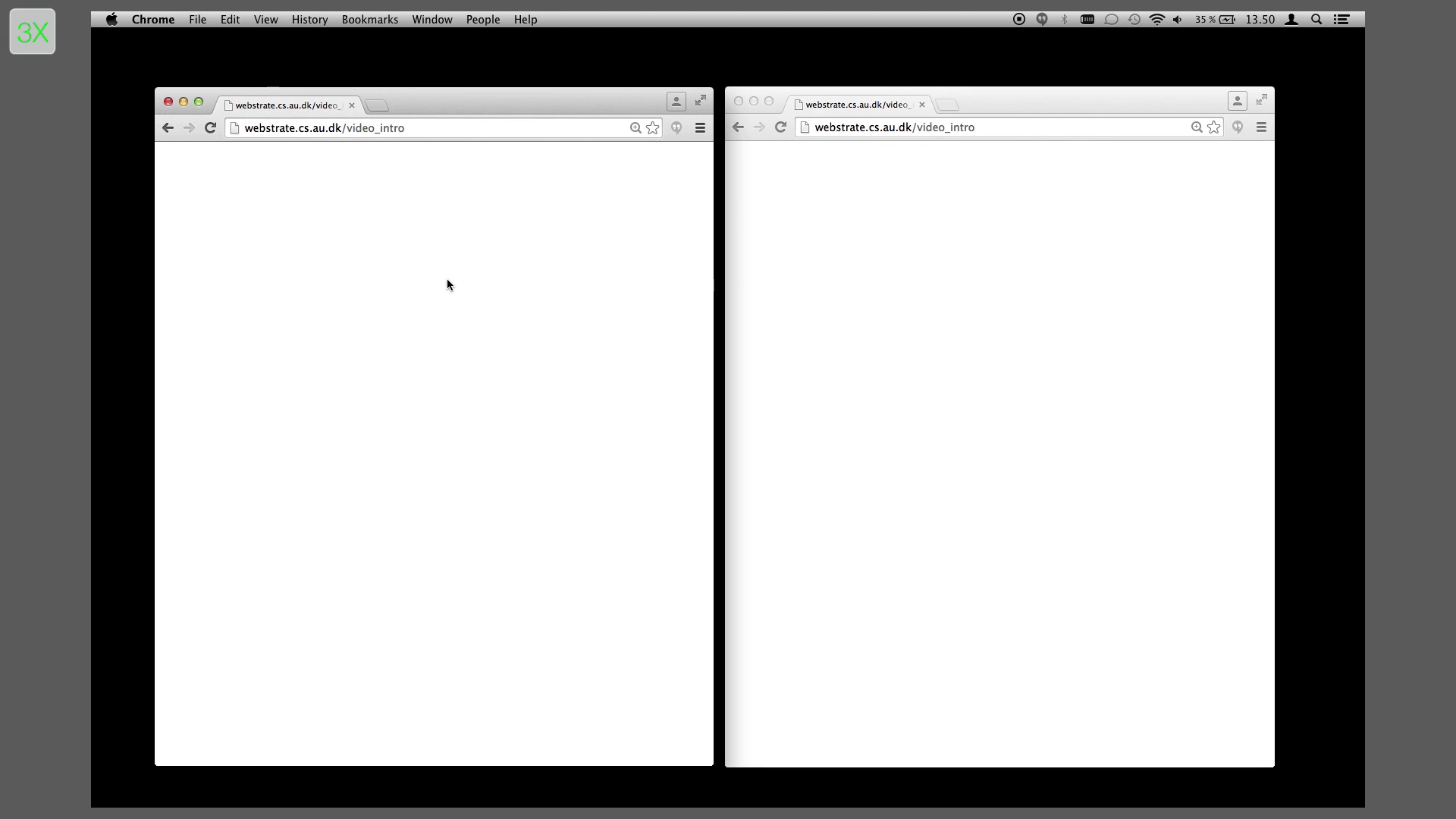Webstrates #
A Platform for Modern Computational Media
Overview #
Webstrates is a platform to explore software as computational media (read more in the “Background” below). Webstrates is a webserver where the pages it serves are collaboratively editable. This means that modifications to the Document Object Model (DOM), for instance, using the developer tools of a web browser, are synchronized with the server and with all other clients currently visiting the same webpage. We call such a webpage a webstrate (short for web + substrate). By storing HTML, CSS, and JavaScript in the DOM this enables to create collaborative web applications. To get a quick overview of Webstrates, we recommend reading the blog article “A Brief Overview of Webstrates.”

Webstrates Example: Creating a primitive collaborative writing tool using the contenteditable HTML attribute. Changes made with the developer tools of a browser are synchronized between clients by Webstrates.
Background #
Webstrates is primarily developed at Aarhus University, in collaboration with Télécom Paris. It has has been used by research labs, from Aarhus University, Télécom Paris, and Université Paris-Saclay to University of California, San Diego and many others, with the goal to explore computational media (we formerly used the term shareable dynamic media). Computational media is software that blurs the distinction between documents and applications, and between developer and user. We defined four principles that modern computational media should adhere to: It should be (1) malleable, so that users can change and shape software to their personal needs, (2) shareable with other users and enable collaboration, (3) distributable across a variety of heterogeneous devices and operating systems, and (4) computable by supporting custom computation from within a document.
A piece of software built on Webstrates is neither application nor document, and we say that a computational medium is a collection of information substrates (or substrates for short). Substrates embody content, computation, and interaction, effectively blurring the distinction between document and application. Substrates can evolve over time and shift roles, acting as what are traditionally considered documents in one context and applications in another, or a mix of the two. Webstrates (web + substrates) allows us to explore this vision through a simple yet powerful change to basic web technology.
For more information about the vision of computational media, see the 2021 LIVE Workshop keynote video “Software as Computational Media.”
Research Paper #
The initial research paper presenting Webstrates was published at the ACM UIST 2015 conference. The published paper is available in the ACM Digital Library and as a preprint (PDF).
Clemens N. Klokmose, James R. Eagan, Siemen Baader, Wendy Mackay, and Michel Beaudouin-Lafon. 2015. Webstrates: Shareable Dynamic Media. In Proceedings of the 28th Annual ACM Symposium on User Interface Software & Technology (UIST ’15). https://doi.org/10.1145/2807442.2807446.
BibTeX
@InProceedings{Klokmose2015,
author = {Klokmose, Clemens N. and Eagan, James R. and Baader, Siemen and Mackay, Wendy and Beaudouin-Lafon, Michel},
title = {Webstrates: Shareable Dynamic Media},
year = {2015},
booktitle = {Proceedings of the 28th Annual ACM Symposium on User Interface Software & Technology},
series = {UIST '15},
doi = {10.1145/2807442.2807446}
}
A follow-on overview of ten years of research that led to and followed on from Webstrates was published in ACM ToCHI and presented at the ACM CHI 2022 conference. It is available in the ACM Digital Library and as a preprint (PDF).
Marcel Borowski, Bjarke V Fog, Carla F Griggio, James R Eagan, Clemens N Klokmose. 2022. Between Principle and Pragmatism: Reflections on Prototyping Computational Media with Webstrates. ACM Transactions on Computer-Human Interaction, (30)4. https://doi.org/10.1145/3569895
BibTeX
@article{borowski22,
author = {Borowski, Marcel and Fog, Bjarke V and Griggio, Carla F and Eagan, James R and Klokmose, Clemens N},
doi = {10.1145/3569895},
journal = {{ACM Transactions on Computer-Human Interaction}},
month = Oct,
publisher = {{Association for Computing Machinery}},
title = {{Between Principle and Pragmatism: Reflections on Prototyping Computational Media with Webstrates}},
year = {2022}
}